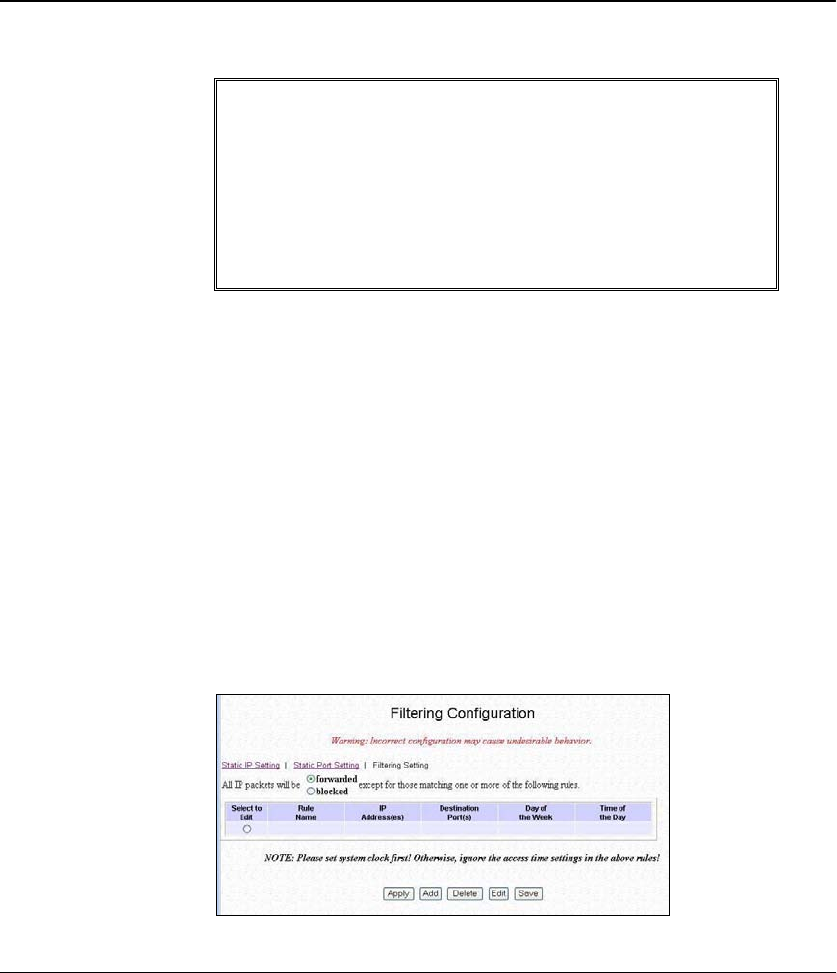
Chapter 5 Web-based Interface Configuration for Compex SGX3226
31
The Internet makes two transport protocols available to its applications,
namely TCP and UDP.
Transmission Control Protocol
(TCP)
For building a reliable
communications stream on top of
the unreliable packet Internet
Protocol (IP). TCP is the protocol
that supports nearly all Internet
applications.
User Diagram Protocol (UDP)
A connectionless protocol that
runs on top of IP networks.
UDP/IP provides very few errors
recovery services, offering instead
a direct way to send and receive
datagrams over an IP network. It is
used primarily for broadcasting
messages over a network.
5.6.3 Filtering Setting
Compex SGX3226 allows Packet Filtering rules be defined based on three
factors, Source IP Address, TCP Port and Time. IP Packet Filtering
examines the outgoing packets and decides whether to bypass or to block
them. After the Packet Filtering rules have been defined, the users may
select to bypass or to block the outgoing packets that do not match the rules.
For example, assume that a rule has been defined as "TCP Port 23 (used by
TELNET) from any IP on any day at any time". If the “forwarded” radio
button is selected, all outgoing packets will be sent except TELNET session.
If the blocked radio button is selected, all outgoing packets will be blocked
except TELNET session.
Click on Filtering section at the Configuration window and the GUI will
appear as shown:


















